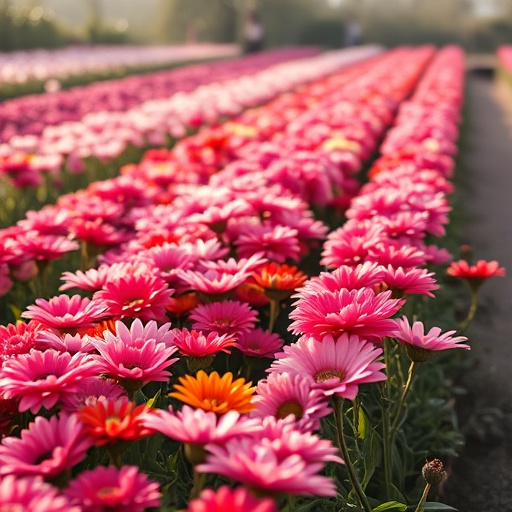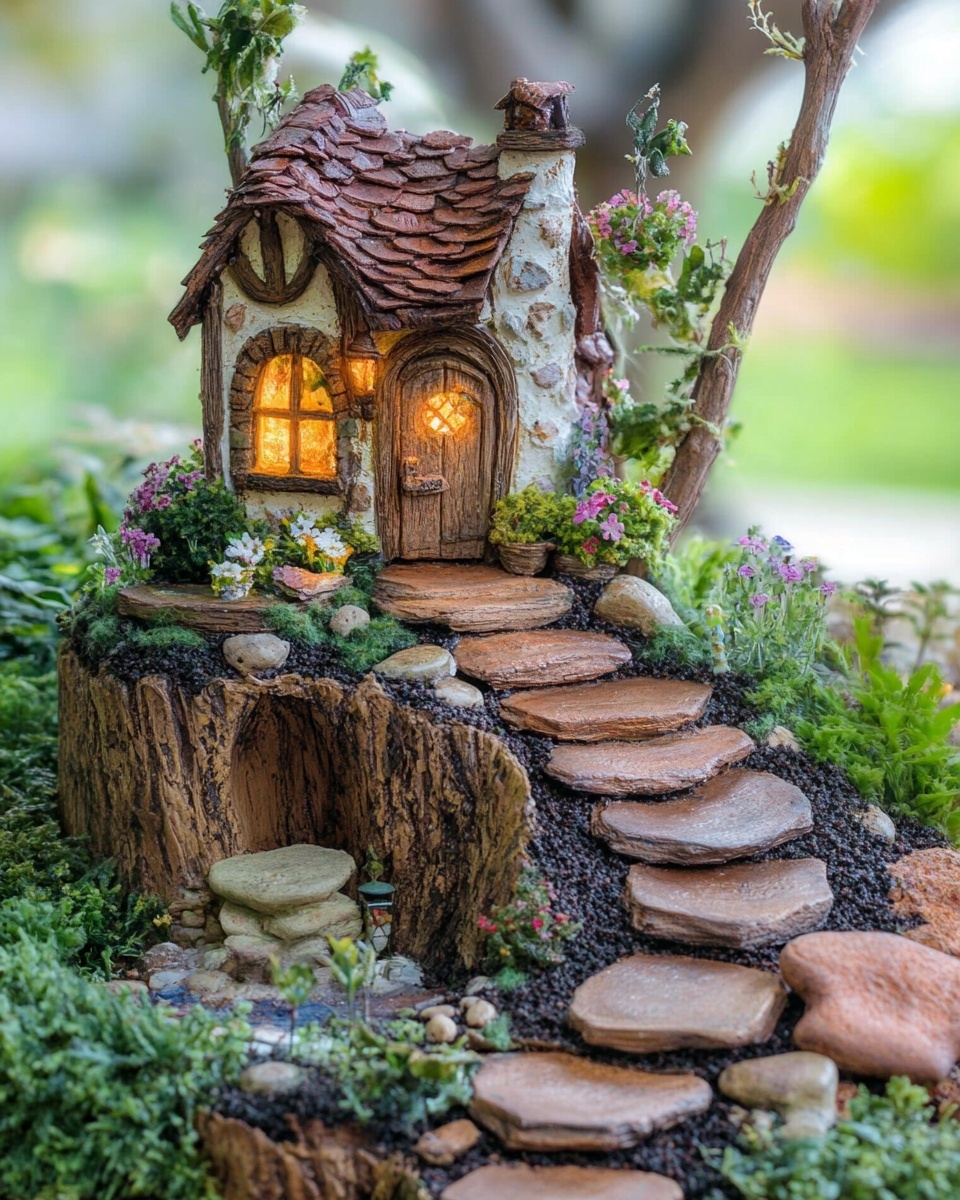Introduction
Ever dreamed of stepping out into your backyard and snipping fresh, vibrant blooms for a stunning centerpiece, or a thoughtful gift, without a trip to the florist? Imagine the sheer joy and satisfaction of cultivating your very own cut flower garden, a haven of color and fragrance designed specifically for harvesting. Many believe growing flowers for cutting is an advanced gardening technique, requiring vast plots and expert knowledge. But what if I told you it’s entirely achievable for anyone, regardless of space or experience, to create a thriving cut flower garden right at home? This comprehensive guide will meticulously walk you through every step, transforming your gardening aspirations into a bountiful reality, ensuring you have a steady supply of beautiful blossoms from spring through fall.
Tools & Materials Needed
Embarking on your cut flower journey requires a few essential items, but don’t worry, many can be repurposed or found affordably. Think of these as your gardening arsenal, ready to help you cultivate beauty.
- Hand Trowel and Spade: For digging planting holes and turning soil. Look for ergonomic designs for comfort during longer gardening sessions. If budget is a concern, a sturdy old kitchen spoon can work in a pinch for small holes!
- Gardening Gloves: Protect your hands from dirt, thorns, and blisters. Opt for breathable, form-fitting gloves that allow dexterity.
- Pruning Shears/Snips: Crucial for clean cuts when harvesting flowers and for general plant maintenance. Invest in a good quality pair that stays sharp; bypass pruners are ideal for delicate stems.
- Watering Can or Hose with a Gentle Sprayer: Consistent moisture is key. A watering can is great for precision, while a hose with a gentle shower setting is efficient for larger areas. Consider a rainwater harvesting barrel as an eco-friendly alternative to municipal water.
- Gardening Fork: Excellent for aerating soil and incorporating compost.
- Seeds or Seedlings: The heart of your cut flower garden! Choose a variety of annuals and perennials to ensure continuous blooms. For beginners, buying seedlings from a local nursery can be a good head start, saving time and reducing initial germination challenges.
- High-Quality Potting Mix or Compost: The foundation of healthy plant growth. A well-draining, nutrient-rich soil is paramount. For raised beds or amending existing garden soil, a blend of compost, topsoil, and perlite or vermiculite works wonders. You can even start your own compost pile using kitchen scraps and yard waste, creating a free, nutrient-dense soil amendment.
- Fertilizer: Organic options like fish emulsion, compost tea, or slow-release granular fertilizers are excellent for promoting vigorous growth and abundant blooms without harsh chemicals.
- Labels and Markers: Essential for remembering what you’ve planted where, especially when starting from seed. Popsicle sticks or smooth stones can be painted as budget-friendly markers.
- Support Structures (Optional but Recommended): For taller varieties like delphiniums or gladioli, stakes, netting, or cages help prevent lodging (plants falling over). Bamboo stakes, twine, or even recycled tomato cages can be effective.
- Buckets or Vases for Harvesting: Have these ready to plunge your freshly cut flowers into water immediately, extending their vase life.
Time & Effort Overview
Cultivating a thriving cut flower garden is a journey, not a sprint, offering immensely rewarding results for your dedicated efforts. Generally, from initial soil preparation to the first bountiful harvest, you’re looking at a commitment that ranges from early spring to late fall.
Planting: Directly sowing seeds can take minimal upfront time, perhaps an hour or two per bed, but requires patience for germination. Transplanting seedlings, while quicker initially, involves more careful handling. For a typical 4×8 foot raised bed, anticipate 2-4 hours for planting.
Growth: This is where patience truly shines. Many annuals, like zinnias and cosmos, can begin flowering in as little as 60-75 days after germination. Perennials, however, might take a full season or even two to establish before producing a significant bloom. This growth rate is generally comparable to many vegetable gardens, though often more visually rewarding sooner than, say, a sprawling pumpkin patch. Consider this: a dedicated cut flower patch can potentially provide continuous blooms for 5-6 months of the year, significantly longer than the typical 2-3 month harvest window for most annual vegetables.
Maintenance: This is a continuous effort throughout the growing season.
- Watering: Daily or every other day during dry spells, depending on your climate and soil type. This can range from 10-30 minutes per session for a moderate-sized garden.
- Weeding: Crucial for preventing nutrient competition. Weekly weeding sessions of 30-60 minutes will keep your garden tidy and your flowers happy.
- Deadheading/Harvesting: This is the most enjoyable “chore”! Doing this every 2-3 days actively encourages more blooms. Each session might take 15-45 minutes, depending on the size of your garden and the number of ready flowers.
Difficulty Level: We’d classify creating a basic cut flower garden as beginner to intermediate. Starting with easy-to-grow annuals like zinnias, cosmos, marigolds, and sunflowers makes it very beginner-friendly. As you gain confidence, you can incorporate more challenging plants or explore seed starting indoors. Don’t worry if your first few harvests aren’t perfect; every gardener learns and grows with their plants. The beauty of a cut flower garden is that even small successes yield gorgeous rewards!
Step-by-Step Gardening Process
Site Selection and Soil Preparation
Choosing the right location is paramount. Your cut flower garden needs at least 6-8 hours of direct sunlight daily. Observe your yard throughout the day to identify the sunniest spots. Good drainage is also critical; poor drainage can lead to root rot, a common killer of flowering plants. Once you have your sunny spot, it’s time to prepare the soil. Start by clearing any weeds or debris. Loosen the soil to a depth of at least 8-12 inches using a spade or gardening fork. Amend your soil generously with compost. Organic matter improves soil structure, drainage, and water retention, and provides essential nutrients. Aim for a soil pH between 6.0 and 7.0 for most flowering plants. Don’t worry if your soil isn’t perfect; consistently adding compost will dramatically improve it over time.
Choosing Your Flowers
This is where the fun begins! Select a mix of annuals (bloom for one season) and perennials (return year after year) for continuous harvests. For your first cut flower garden, focus on reliable, high-yielding varieties known for their long vase life.
- Annuals: Zinnias (classic workhorses!), Cosmos, Marigolds, Sunflowers, Sweet Peas, Amaranthus, Celosia, Bachelor’s Buttons.
- Perennials: Echinacea (Coneflower), Lavender, Salvia, Delphinium, Peonies, Yarrow.
Consider mixing heights, textures, and colors to create diverse bouquets. Think about what will look good together both in your garden and in a vase.
Planting Your Seeds or Seedlings
Whether you’re sowing seeds directly or transplanting seedlings, timing is everything. Check seed packets or plant tags for specific planting instructions and recommended planting dates for your climate zone.
- Direct Sowing: Once the danger of frost has passed and the soil has warmed, create shallow furrows according to the seed packet’s depth recommendation. Plant seeds sparsely to avoid overcrowding, then gently cover and water. Thin seedlings later if needed, giving stronger plants enough space.
- Transplanting Seedlings: Dig a hole slightly larger than the seedling’s root ball. Gently remove the plant from its container, careful not to disturb the roots too much. Place the seedling in the hole, ensuring the top of the root ball is level with the soil surface. Fill with soil, gently firm around the base, and water thoroughly. Leave adequate spacing between plants to allow for good airflow and growth; this helps prevent fungal diseases.
Initial Watering and Fertilization
After planting, give your new garden a good, deep watering. This helps settle the soil around the roots and eliminates air pockets. For the first few weeks, keep the soil consistently moist but not waterlogged. Think of it like giving a newborn plant gentle sips of water regularly. If your soil was heavily amended with compost, initial fertilization might not be necessary. However, a balanced, slow-release organic fertilizer can be incorporated into the soil at planting time, or you can start with a diluted liquid feed (like fish emulsion) a couple of weeks after planting to give your flowers a gentle boost.
Growth & Care Tips
A successful cut flower garden thrives on consistent, attentive care. Think of yourself as a floral steward, guiding these beauties to their full potential.
- Watering Frequency: The golden rule for most flowering plants is consistent moisture. This generally means deep watering 2-3 times a week, rather than shallow daily sprinkles. Aim for 1 inch of water per week, either from rain or irrigation. On hot, windy days or during dry spells, you might need to water more frequently, perhaps daily. To check, simply stick your finger about an inch or two into the soil; if it feels dry, it’s time to water. Early morning watering is best, allowing foliage to dry before nightfall, which reduces the risk of fungal diseases. Data suggests that proper watering techniques can reduce plant stress by up to 30%, leading to more vigorous growth and increased bloom production.
- Sunlight Exposure: As we mentioned, most cut flowers are sun-lovers, requiring a minimum of 6-8 hours of direct sunlight daily. Less sunlight will result in leggy plants, fewer blooms, and weaker stems. If you notice your plants stretching excessively towards the light, they might be signaling insufficient sun.
- Pruning & Deadheading: These practices are vital for maximum bloom production and overall plant health.
- Deadheading: Regularly removing spent blooms prevents the plant from expending energy on seed production and directs it towards creating more flowers. This can increase bloom yield by 20-40% for many annuals.
- Pinching: For many annuals (like zinnias, cosmos, and snapdragons), pinching back the central stem when the plant is young (about 6-12 inches tall with 3-4 sets of leaves) encourages branching, leading to more flowers rather than one single, dominant stem. Make your cut just above a set of leaves.
- Pruning: For perennials, pruning decisions depend on the specific plant. Some benefit from a hard cutback after their main flush of blooms to encourage rebloom, while others prefer light shaping.
- Fertilization: While good soil rich in compost is a fantastic start, blooming plants are heavy feeders. Supplement your soil with a balanced organic fertilizer every 4-6 weeks during the active growing season. Look for fertilizers with a slightly higher phosphorus (P) content, as phosphorus supports flower development. Over-fertilization, especially with nitrogen, can lead to lush foliage but fewer flowers.
- Pest Prevention: Inspect your plants regularly for signs of pests or diseases. Early detection is key.
- Good Garden Hygiene: Remove weeds, fallen leaves, and diseased plant material promptly.
- Physical Barriers: Row covers can protect young seedlings from early pests.
- Beneficial Insects: Encourage ladybugs, lacewings, and other predatory insects by planting companion plants like dill, fennel, and cilantro.
- Organic Solutions: For persistent issues, neem oil or insecticidal soap can be effective, but always read directions carefully and apply in the evening to avoid harming beneficial insects.
- Disease: Ensure good air circulation (proper spacing and pruning) to deter fungal diseases. If a plant shows signs of disease, remove and dispose of affected parts immediately to prevent spread.
Eco-Friendly & Sustainable Alternatives
Cultivating a beautiful cut flower garden doesn’t have to come at the expense of our planet. Embrace sustainable practices to nurture your flowers and the environment simultaneously.
- Composting: This is arguably the most impactful eco-friendly practice. Instead of buying commercial fertilizers, start a compost pile with kitchen scraps, yard waste, and even shredded paper. This black gold enriches your soil with vital nutrients, improves drainage, and reduces landfill waste. A well-maintained compost pile can produce nutrient-rich soil amendments equivalent to commercial fertilizers, completely free of charge. For tips on setting up your compost, you might find valuable insights in articles about sustainable gardening practices.
- Natural Fertilizers: Beyond your own compost, explore other organic soil amendments. Worm castings, kelp meal, bone meal, and alfalfa meal provide slow-release nutrients without the environmental impact of synthetic fertilizers. They also foster a healthy soil microbiome, which is crucial for long-term plant vitality.
- Water Conservation:
- Drip Irrigation or Soaker Hoses: These deliver water directly to the root zone, minimizing evaporation and runoff compared to overhead sprinklers. This method can reduce water usage by 30-50%.
- Mulching: Apply a 2-4 inch layer of organic mulch (shredded leaves, wood chips, straw) around your plants. Mulch suppresses weeds, regulates soil temperature, and significantly reduces water evaporation, meaning you water less frequently.
- Rainwater Harvesting: Install a rain barrel to collect rainwater from your gutters. Rainwater is naturally soft and chlorine-free, which is excellent for your plants, and it reduces your reliance on treated tap water.
- Pest Control with Nature: Instead of chemical pesticides, turn to integrated pest management (IPM). Encourage beneficial insects by planting diverse native flowers and herbs. Use barriers like netting for vulnerable seedlings. For minor infestations, manual removal or homemade insecticidal soaps are often effective.
- Alternatives for Small Spaces: Don’t have a sprawling garden? No problem!
- Balcony Gardens: Many cut flowers, especially compact varieties like dwarf zinnias, cosmos, and sweet peas, thrive in containers. Choose pots with good drainage and ample size for root development. For inspiration, check out ideas for how to start a balcony herb garden in small spaces, which offers transferable concepts for flowers.
- Vertical Gardens: Maximize your growing area by going vertical. Pallet gardens, hanging planters, or tiered growing racks can host an impressive array of cutting flowers. Imagine a wall of snapdragons or petunias!
- Window Boxes: Perfect for smaller annuals and herbs that complement your cut flower vision.
By implementing these eco-friendly alternatives, you’re not just growing beautiful flowers; you’re contributing to a healthier ecosystem and creating a truly sustainable cut flower garden.
Creative Ideas & Uses
A cut flower garden isn’t just about cultivating blooms; it’s about giving them new life and purpose both indoors and out. Embrace your inner floral designer!
- Bouquets for Every Occasion: This is the most obvious, but don’t underestimate the joy of a homegrown bouquet. Experiment with different flower combinations, focusing on varying heights, textures, and colors. A common trick is to use “thrillers” (focal flowers like sunflowers or dahlias), “fillers” (airy sprigs like baby’s breath or feverfew), and “spillers” (trailing greens like eucalyptus or coleus cuttings). Even a simple bunch of a single type of flower, like fully bloomed zinnias, can be breathtaking.
- Decorating Your Home: Beyond formal arrangements, use single stems or small clusters to brighten everyday spaces. A delicate cosmos in a bud vase on your bedside table, a few lavender sprigs tied with twine in the bathroom, or a floating rose head in a bowl of water can elevate your home decor instantly. Consider creating whimsical garlands with flexible stems for parties or seasonal displays.
- Thoughtful Gifts: There’s nothing quite like a homemade gift, and a bouquet from your own cut flower garden speaks volumes. Wrap stems in brown paper and tie with a ribbon, or create small posies for neighbors and friends. You can even dry some of your blooms for everlasting gifts or crafts.
- Repurposing Garden Materials: Don’t let anything go to waste!
- Fallen Petals: Collect rose petals for potpourri or to scatter on bathwater for a luxurious soak.
- Dried Flowers: Many flowers, like lavender, statice, strawflowers, and even some rose varieties, dry beautifully. Hang them upside down in a cool, dark place for a few weeks. Use dried flowers for wreaths, everlasting arrangements, or crafting projects.
- Seeds: If you let some flowers go to seed, you can save them for next year’s planting, creating a self-sustaining cycle. Just be sure they are open-pollinated varieties, not hybrids, if you want them to grow true to type.
- Landscaping Inspirations: Your cut flower garden can also be a stunning part of your overall landscape design.
- Borders: Use taller varieties at the back of your garden beds, transitioning to shorter, more prolific bloomers in the front.
- Color Blocking or Gradients: Plant swathes of single colors for dramatic effect, or blend colors in a gradient – for example, moving from pale pink cosmos to deep red zinnias.
- Pollinator Paradise: Design your garden not just for cutting, but also to attract bees, butterflies, and hummingbirds. Include native plants and flowers with single, open blooms that are easily accessible to pollinators. A vibrant, buzzing garden is a healthy and beautiful one.
- Pathways and Edging: Line garden paths with fragrant blooms like sweet alyssum or low-growing marigolds. These not only define the space but also offer charming little snips for miniature arrangements.
Your cut flower garden is an ever-evolving canvas. Be adventurous, experiment with new combinations, and let your creativity blossom alongside your flowers!
Common Mistakes to Avoid
Even the most seasoned gardeners make mistakes. The key is to learn from them and adapt. Here are some common pitfalls in a cut flower garden and how to sidestep them:
- Overcrowding Plants: A common beginner’s mistake driven by enthusiasm. Too many plants packed into a small area leads to poor air circulation, which can invite fungal diseases like powdery mildew. It also results in competition for light, water, and nutrients, leading to weaker, leggy plants and fewer, smaller blooms. Studies show that properly spaced plants can yield up to 40% more blooms. Always follow spacing recommendations on seed packets or plant tags for optimal growth. Give your flowers room to breathe and flourish.
- Inconsistent Watering: Both overwatering and underwatering are detrimental. Overwatering suffocates roots, leading to root rot (which accounts for over 60% of houseplant failures and is equally problematic in outdoor gardens) and invites fungal diseases. Underwatering stresses the plant, slows growth, and reduces bloom production. Establish a consistent watering schedule, checking soil moisture before you water, and adjust based on weather conditions.
- Ignoring Soil Health: Treating soil as mere anchor instead of a living ecosystem is a recipe for disappointment. Poor soil structure (too much clay or sand), lack of organic matter, and imbalanced pH severely limit nutrient uptake and root development. Always amend your soil with ample compost yearly. A soil test every few years can provide valuable insights into nutrient deficiencies or pH imbalances.
- Neglecting Deadheading: As mentioned earlier, if you let spent flowers remain on the plant, the plant shifts its energy to producing seeds, reducing future blooms. This is particularly true for most annuals and reblooming perennials. Consistently deadhead to signal to the plant that its primary job is still to produce more flowers.
- Harvesting at the Wrong Time: This significantly impacts vase life. Many flowers should be harvested when they are just beginning to open, or when the first few petals show color, rather than when fully open. For example, zinnias are best cut when fully open, but gladioli are cut when just the bottom one or two florets are showing color. Research the ideal harvest stage for each specific flower type you grow to maximize its longevity in your vase.
- Using Dull Pruning Shears: Ragged cuts from dull tools crush plant stems, reducing the stem’s ability to take up water and making it more susceptible to disease. Always use sharp, clean pruning shears for a swift, clean cut. Disinfect your tools between plants if you suspect disease to prevent spread.
- Planting Only One Type of Flower: While a bed of all zinnias can be beautiful, a diverse cut flower garden offers continuous blooms, attracts more pollinators, and provides a broader array of choices for arrangements. Mix annuals and perennials, and select varieties with different bloom times, forms, and textures.
- Forgetting About Support: Taller, heavy-headed flowers like dahlias, gladioli, and delphiniums often require staking or other support to prevent them from flopping over, especially after heavy rain or wind. Install supports when plants are young to avoid damaging established root systems later.
By being mindful of these common errors, you’ll set yourself up for much greater success and a more abundant, beautiful cut flower garden.
Maintenance & Storage Tips
Maintaining your cut flower garden extends beyond the growing season, ensuring healthy plants for years to come and preserving your harvest for future enjoyment.
Long-Term Plant Health:
- Fall Clean-Up: After the first hard frost, many annuals will die back. Go through your garden and remove all dead plant material. This reduces overwintering sites for pests and diseases. For perennials, you can generally cut back spent foliage once it browns, though some gardeners prefer to leave it for winter interest or to provide shelter for beneficial insects, cutting back in early spring instead.
- Winter Protection: For borderline-hardy perennials in colder climates, a layer of mulch (straw, shredded leaves, pine needles) applied after the ground freezes can protect roots from harsh temperature fluctuations and “frost heave.”
- Soil Amendment: Just as you prepared the soil in spring, fall is an excellent time to replenish nutrients. Add a generous layer of compost over your garden beds. The winter freeze and thaw cycles, along with microbial activity, will help incorporate it naturally into the soil, setting the stage for robust spring growth.
- Crop Rotation: If you have larger beds, rotating where you plant certain annuals each year can help prevent soil-borne diseases and pest buildup specific to those plant families.
Storage Tips for Your Harvests:
- Vase Life Extension: Once you’ve harvested your beautiful blooms, their longevity depends on proper handling. Immediately plunge cut stems into a bucket of clean water. Before arranging, re-cut the stems underwater at an angle (to prevent air bubbles from blocking water uptake) and remove any foliage that would fall below the waterline in your vase (to prevent bacterial growth). Change vase water daily and add a floral preservative, which provides nutrients and inhibits bacterial growth.
- Drying Flowers: Many flowers, like lavender, statice, strawflowers, celosia, and even some roses, can be dried for lasting beauty. Bundle small bunches together with rubber bands, hang them upside down in a cool, dark, well-ventilated area (like a closet or attic), and allow them to dry completely over 2-3 weeks. Once dry, they can last for months or even years.
- Seed Storage: If you’re saving seeds from your favorite open-pollinated varieties, ensure they are thoroughly dry before storing. Place them in airtight containers (small glass jars or ziplock bags) in a cool, dark, dry place. Label them clearly with the flower type and date. Properly stored seeds can remain viable for several years, ensuring a future supply for your cut flower garden.
Solutions for Common Issues:
- Yellow Leaves: Often a sign of either overwatering (leading to root rot) or nutrient deficiency (especially nitrogen). Check your watering habits and consider a balanced liquid feed.
- Poor Soil Drainage: If water pools on the surface or drains very slowly, your soil likely has too much clay or compaction. Incorporate copious amounts of organic matter (compost, well-rotted manure) to improve soil structure over time. Raised beds are also an excellent solution for drainage challenges.
- Leggy Plants: This usually indicates insufficient light. If potted, move them to a sunnier location. For in-ground plants, consider pruning back and ensuring surrounding plants aren’t casting too much shade. Pinching young plants can also encourage bushier growth.
By implementing these maintenance and storage strategies, you’ll not only enjoy a healthier, more productive cut flower garden but also extend the beauty of your blooms far beyond their initial harvest.
Conclusion
Embarking on the journey of growing your own cut flower garden is an incredibly rewarding experience, transforming a patch of earth into a vibrant canvas of color and fragrance. We’ve explored everything from selecting the perfect site and the right tools, to the intricate dance of planting, nurturing, and harvesting your blooms. You now have the knowledge to select the ideal varieties, understand the nuances of soil health, master watering techniques, and proactively prevent pests and diseases. Beyond just cutting flowers, you’ve learned how to embrace sustainable practices and even extend the life and utility of your floral bounty through drying and creative arrangements.
The beauty of a homegrown cut flower garden goes beyond aesthetics; it connects you deeply with nature, reduces your carbon footprint, and provides an endless source of joy, creativity, and thoughtful gifts. Think of each bloom as a testament to your efforts, a burst of natural artistry you orchestrated from a tiny seed. So, why wait? The soil is calling, the sun is shining, and your own personal floral paradise awaits.
We encourage you to take that first step. Get your hands dirty, nurture those seeds, and watch in wonder as your garden bursts into life. Share your progress, your triumphs, and even your learning curves with us! What flowers are you most excited to grow? Snap a picture, share it in the comments below, and let’s inspire each other to cultivate more beauty in our world.
FAQ
Q1: What are the easiest flowers to grow in a cut flower garden for a beginner?
For novices, reliable workhorses like Zinnias, Cosmos, Marigolds, Sunflowers, Sweet Peas, and Calendula are excellent choices. They are generally forgiving, produce abundant blooms, and have a good vase life. You might also find this article helpful: Easy Flowers to Grow For Beginners.
Q2: How often should I water my cut flower garden?
The general rule is to water deeply 2-3 times a week, aiming for about 1 inch of water per week, either from rain or irrigation. Always check the soil moisture by sticking your finger an inch or two deep; if it feels dry, it’s time to water. Overwatering is a common mistake, so ensure good drainage.
Q3: Why are my cut flowers wilting quickly after I harvest them?
Several factors can cause quick wilting. Ensure you are cutting stems with sharp, clean shears, immediately plunging them into water, and re-cutting stems underwater before arranging. Also, remove all foliage below the waterline to prevent bacterial growth, and change the vase water daily, using a floral preservative if possible.
Q4: Do I need to fertilize my cut flower garden?
Yes, blooming plants are heavy feeders. While rich, compost-amended soil is key, supplementing with a balanced organic fertilizer every 4-6 weeks during the active growing season will promote strong growth and abundant blooms. Look for a fertilizer with slightly higher phosphorus content.
Q5: How do I choose the right location for my cut flower garden?
Most cut flowers require at least 6-8 hours of direct sunlight daily to thrive and produce plentiful blooms. Observe your yard throughout the day to identify the sunniest spots. Good drainage is also crucial; avoid areas where water tends to pool.
Q6: Can I grow a cut flower garden in pots or small spaces?
Absolutely! Many beautiful cutting flowers, especially compact varieties of zinnias, cosmos, and even dwarf sunflowers, thrive in appropriately sized containers. Vertical gardens, window boxes, and hanging baskets are also fantastic ways to maximize space for a bountiful cut flower garden. For more ideas specific to limited areas, explore concepts like DIY Flower Bed Ideas for Small Yards.
Q7: What’s the best way to prevent pests in my cut flower garden organically?
Start with good garden hygiene – remove weeds and diseased material. Encourage beneficial insects like ladybugs by planting diverse flowers and herbs. For minor infestations, manual removal or organic solutions like neem oil or insecticidal soap can be effective. Regular inspection is key for early detection.
You may also enjoy reading:






